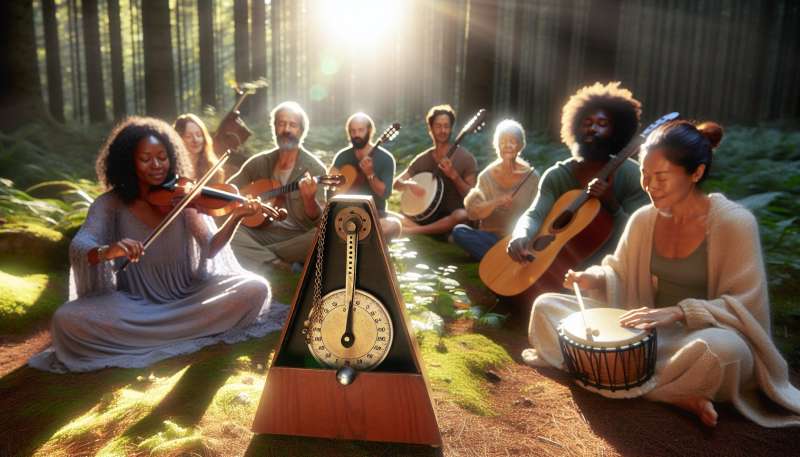
Music's Ancient Roots
Music predates recorded history, with evidence of musical instruments from over 40,000 years ago. The oldest known instruments are flutes made from animal bones, suggesting music's role in early human culture.
The Universal Language
Music is often called a universal language because it conveys emotions and messages across cultural and linguistic barriers, with elements like rhythm and melody being understood worldwide.
Mozart's Prodigious Childhood
Wolfgang Amadeus Mozart was composing music by age five. His early start and prolific output significantly shaped classical music, contributing to the notion of the 'child prodigy' in music.
Cymatics: Visual Sound
Cymatics is the study of visible sound and vibration. A cymatic experiment involves spreading fine sand across a plate that vibrates due to sound frequencies, thus creating intricate patterns that visualize the unseen beauty of music.
Music Alters Brain Waves
Listening to music can change brainwave patterns, affecting mental states. For instance, classical music often induces alpha waves, which are associated with relaxation and creativity, while upbeat music can increase beta waves, leading to heightened concentration.
432 Hz vs 440 Hz
There's a debate about tuning standards: some argue that tuning music to 432 Hz, as opposed to the standard 440 Hz, aligns more with nature and can have a more positive effect on the human body and consciousness.
Silent Music Phenomenon
John Cage's composition '4′33″' consists of musicians not playing their instruments for four minutes and thirty-three seconds. Its purpose is to demonstrate that the absence of intended sound makes the ambient noise become the music.
What materials made the oldest instruments?
Wood and stone
Animal bones
Bronze and iron
Company